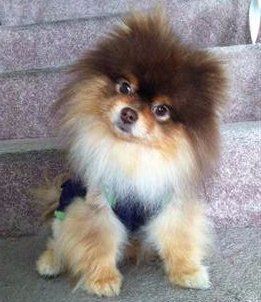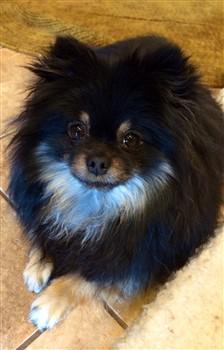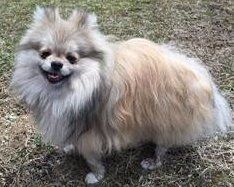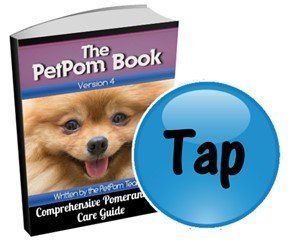Tri Color Pomeranians
About Tri-Colors
Since the Pomeranian breed can be seen in a wide range of colors, as many as 3 can appear on the coat. This is known as a tri-color Pomeranian.
While technically, any color can appear, there are some that are seen much more than others.
Black, chocolate (brown), tan, cream and white are seen much more often in tri-coats than red, lavender or blue, which are much more rare in solids, partis (two colors) or tri coats.
So, the more common a color is, the more likely it will appear in Pomeranians that have coats consisting of 3 colors.
But in addition, the more common colors tend to be seen together. For example, you will not often see a lavender, white and cream and you will not see a red, lavender and chocolate, as those colors are simply not seen together, but you will see a black, white and cream.
One of the wonderful and aesthetically pleasing aspects about tri color Pomeranians, is that in many cases, you will see one of the 3 colors appearing above the eyes.
This sort of marking is known as eyebrows.
With a Pom that has dark fur on the head, the above-the-eye color will be lighter. And for those that have light fur on the head, the color will be darker.
Uschi, a tri color Pomeranian; Colors are black, white and tan
Photo courtesy of Valerie Orlando
For those that have what would be considered a medium color (tan, gray, orange), the 3rd color that is seen as eyebrows can be either lighter or darker.
In addition, with more colors in play, you can then have more focal points and types of markings. For example, a blaze (a stripe running over the forehead) or a collar (a different color running around the neck).

This Pom (photo left; above on mobile) may, at first, appear to be a parti (two color), however, if you look closely you will see that his coat holds 3 colors: white, black and on the head, chocolate (brown).
Sirus Blue, at 1 and 1/2 years old
Photo courtesy of Kiley Turner

This Pomeranian is a tri-color of white, chocolate and tan. The nose is chocolate.
Cuzco, Photo courtesy of Nathalie Orreg
Changes to Expect with Tri-Color Pomeranians
The Pomeranian breed is well-known for its dramatic transformation in coat that occurs when the soft puppy fur falls out to be replaced by the adult coat.
During this phase, often referred to as the
puppy uglies, there is almost always a change in color.
For this reason, while most tri-colored Pomeranians will remain having 3 colors when a pup and also as an adult, do expect that there will be changes.
One of the colors in the three may decrease quite a bit or increase.
In addition, each of the 3 may have differ in intensity; they may lighten or darken.
So, for example, you may have a chocolate, white and tan Pom that is about 1/3 of each, but then as an adult, he may be primarily chocolate brown
with the white growing in much more on the chest and the tan barely visible.
Some colors (or markings, more accurately), are expected to really transform; for example, sable, which is dark tipped hairs.
On this tri-color Pom (right; below on mobile), that is tan, white and sable, that sable was most likely more prominent when the Pom was a young puppy. Now, at almost 1 years old, color will stay relatively the same.
Can You Breed for Tri Colors?
Loki, 11 months old; Photo courtesy of David Bonn
Certainly! Some breeders focus on solids, some on parti and some on partis and tri's. If you breed a tri to a tri, you will most definitely produce a litter of puppies that also hold triple colors.
If you are breeding for solids only, you would never want to introduce partis or tri dogs into that.






